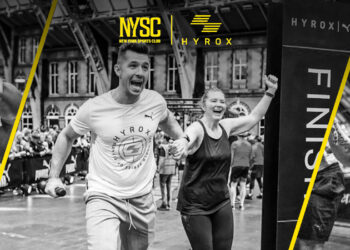
Victor Troha with Cincinnati Sports Club shares how their personal training program for those with long-term COVID symptoms came about and what health clubs should keep in mind when working with these COVID-19 long-haulers.
The Cincinnati Sports Club is using key elements from the Johns Hopkins “Bouncing Back from COVID-19” guide to help COVID-19 long-haulers in different stages of recovery through a new tailored personal training program.
Here, Victor Troha, a doctor of physical therapy and the club’s wellness clinician and personal trainer, shares how the program came about and what clubs should keep in mind when working with clients recovering from long-term COVID-19 symptoms.
How did this program come about?
VT: This program was originally implemented by a rehabilitation team at John’s Hopkins. Obviously, the COVID-19 pandemic has impacted everyone in some way. However, the outreach to people to continue recovery post contraction has been limited. As a medical professional I saw this as an under-treated importance for people to return to normal activity and exercise.
How has the turn out been?
VT: The turnout has been fantastic. Mainly because I’ve been able to implement aspects of this program to each patient based off their needs. For example, some people may have more difficulty with breathing during endurance activities while others have suffered with balance and vestibular impairments. My approach would be to identify each area that needs improvement and take strategies from the Johns Hopkins rehab protocol and tailor it to the patient. This flexibility within the program has allowed me to see a wide range of demographics and all different fitness levels.
Why is it important for health clubs to offer programming specifically for those still recovering from COVID-19 symptoms?
VT: The first reason is this is an untapped area in the health field that should be widely available. This is a worldwide pandemic that has created long term effects on so many people. The second is that treatment shouldn’t just stop when they no longer test positive. The benefits of improving fitness, breathing, the vestibular system and balance are so important for the general population, let alone someone recovering from a virus.
A health club offering this service can literally be life changing for people. I’ve seen too many patients avoid returning to exercise and an active lifestyle because of fear and lack of guidance. Often choosing to be sedentary is the easier option for people who need this the most.
What’s important to keep in mind when working with those recovering from COVID-19?
VT: Everyone is at a different level with different ailments. The approach should always be to identify the areas that need to be addressed and identify the patient’s goals. From there establish what level they are at to match with the appropriate therapeutic exercises. It’s also so important to educate the patient on how to progress and know their limits.
Anything else you’d like to add?
VT: This process shouldn’t be rushed, especially for long-haulers — a termed that identifies people who suffer from long term symptoms after contracting COVID-19. Slowly improving and reaching goals will lead to sustained long term success.
This has been such a fulfilling and rewarding opportunity for me. Seeing clients achieve goals they haven’t done in over a year is a testament to the importance of this program. I hope to see more health clubs outreach to a population that is in high demand.
Stay ahead in the fitness industry with exclusive updates!
Taylor Gabhart is the editor of Club Solutions Magazine. She can be reached at taylor@peakemedia.com.











